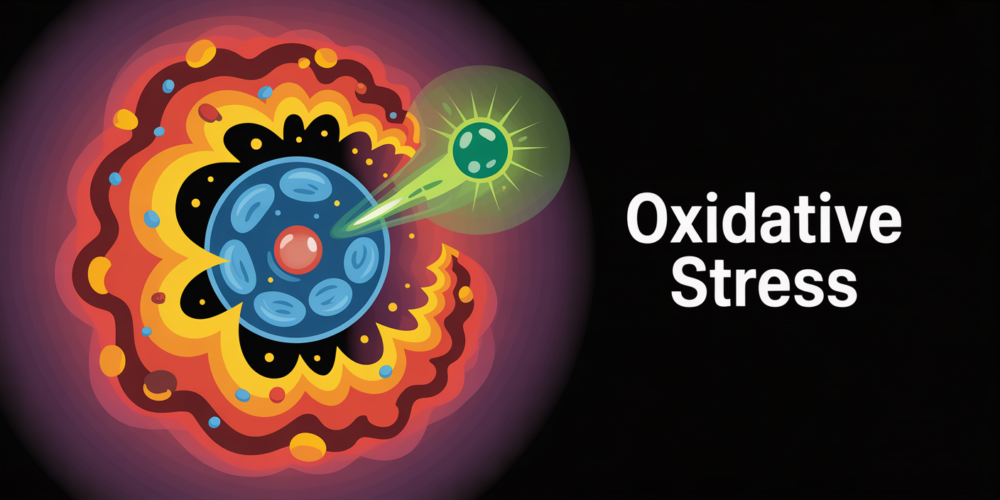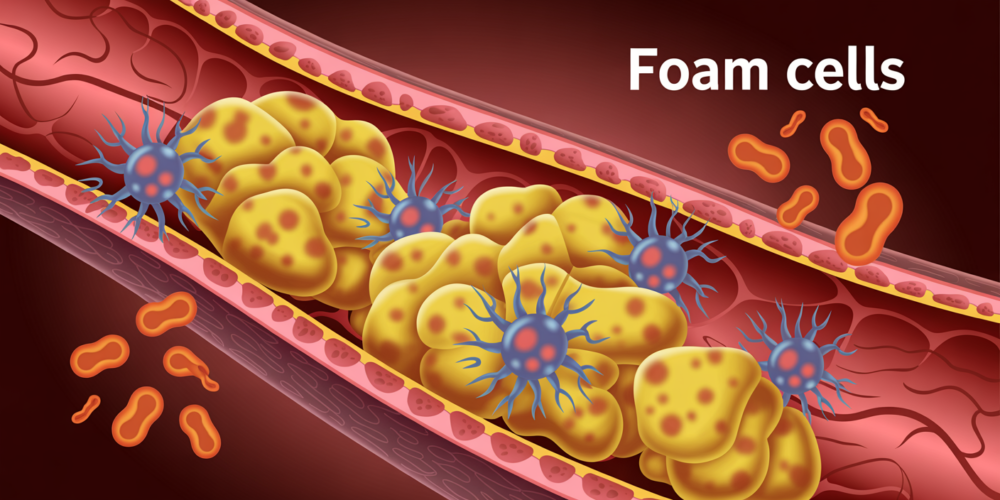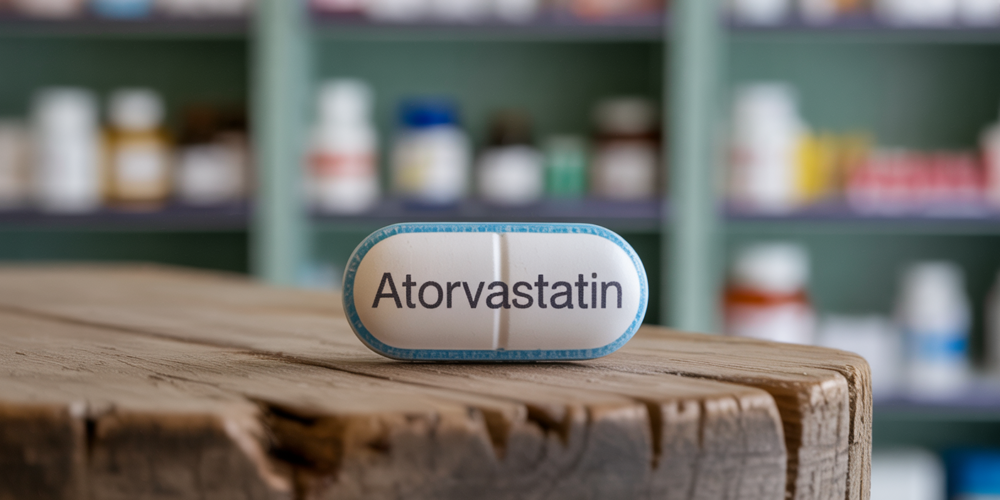
What if I told you that the standard heart health playbook is missing a critical chapter? You diligently get your cholesterol checked, you monitor your blood pressure, and your doctor tells you things look “fine.” But deep down, you might feel that something isn’t quite right, or you have a family history that keeps you worried. The truth is, those routine screenings, while important, can create a dangerous blind spot, missing the most significant underlying factor that could be pushing you toward a heart attack.
This hidden danger is a silent storm brewing inside your arteries, a process called oxidative stress. Think of it as a form of biological rusting, happening at a cellular level. It’s the root cause that makes your arteries inflamed, damaged, and prone to the plaque buildup that leads to catastrophic cardiovascular events. Most conventional cardiologists, however, never test for it. This isn’t because it’s not scientifically validated; it’s because the standard medical model hasn’t caught up to the science. In this article, we’re going to pull back the curtain on this hidden threat. You’ll learn what it is, why it’s being ignored, and most importantly, what you can do to measure and manage it to truly take control of your heart health. (This article is based on the expertise of natural heart doctor, Dr. Jack Wolfson)
Key Takeaways
- Oxidative Stress is a Primary Driver of Heart Disease: It’s the underlying damage to your arteries caused by unstable molecules called free radicals, which leads to inflammation and plaque buildup.
- Standard Tests Are Incomplete: Relying solely on cholesterol and blood pressure readings can miss the bigger picture, as these numbers don’t reflect the level of oxidative damage in your body.
- Conventional Medicine Overlooks It: Most doctors don’t test for oxidative stress because it’s not part of their routine training, isn’t typically covered by insurance, and doesn’t fit the pharmaceutical model of prescribing a pill for a symptom.
- You Can Fight Back: Managing oxidative stress involves specific dietary changes, targeted nutritional support, and lifestyle adjustments like stress reduction and proper sleep.
- Testing is Key: You cannot manage what you don’t measure. Simple, at-home urine tests are now available that can give you a clear window into your body’s level of oxidative stress, empowering you to take preventative action.
1. What Exactly Is Oxidative Stress? (And Why You Should Care)

To understand oxidative stress, you first need to know about free radicals. In your body, you have trillions of molecules. Most are stable. But some, called free radicals, are unstable because they are missing an electron. Like a hyperactive child looking for a toy, they frantically race through your body, trying to steal an electron from healthy, stable molecules. When they succeed, they damage that healthy molecule, turning it into a new free radical, which sets off a destructive chain reaction. Your body has a natural defense system against this: antioxidants.
Antioxidants are molecules that can safely donate an electron to a free radical, neutralizing it without becoming unstable themselves. Oxidative stress occurs when the number of free radicals overwhelms your supply of antioxidants. It’s a state of imbalance. This is the “silent storm.” This process is, in essence, your body rusting from the inside out. For your heart, the consequences are devastating. The delicate lining of your arteries, called the endothelium, is one of the first victims. Oxidative stress injures this lining, making it inflamed and sticky. This is the crucial first step in atherosclerosis, or the hardening of the arteries.
2. The ‘Normal’ Numbers Fallacy: Why Your Cholesterol Isn’t the Whole Story

You’ve been conditioned to fear high cholesterol, particularly LDL, the so-called “bad” cholesterol. But this is a massive oversimplification. The real villain isn’t LDL cholesterol itself; it’s oxidized LDL cholesterol. When a normal LDL particle is attacked by a free radical (due to oxidative stress), it becomes oxidized. This transformed, damaged particle is what your immune system recognizes as a foreign invader. Your body sends immune cells called macrophages to clean up the mess.
These macrophages gobble up the oxidized LDL, becoming what are known as “foam cells.” It is these foam cells that get trapped in the damaged, sticky artery wall, forming the foundation of the plaque that narrows and hardens your arteries. This is why you can have a person with “perfect” LDL numbers on a lab report who still has a massive heart attack. Their problem wasn’t the amount of cholesterol; it was the high level of oxidative stress that was damaging the cholesterol they had, turning it into a plaque-building machine. Without measuring oxidative stress, you are completely blind to this process.
3. Reason #1 Your Doctor Misses It: It’s Not in the Standard Playbook

Most doctors are dedicated, intelligent people who want to help their patients. So why do they miss something so fundamental? The answer lies in their training. Medical schools and residency programs are designed to teach a specific model of care—one that focuses on diagnosing established diseases and managing them with proven, guideline-driven protocols. This system is excellent for acute care, like setting a broken bone or treating a bacterial infection. However, it’s less equipped to handle the root causes of chronic disease. Cardiologists are trained extensively to interpret EKGs, manage blood pressure with medication, lower cholesterol with statins, and perform procedures like angioplasty and stenting. The curriculum for identifying and reversing disease at its biochemical root—through nutrition, lifestyle, and advanced testing for things like oxidative stress—is often minimal to non-existent. It’s considered the realm of “alternative” or “functional” medicine, and therefore, it never makes it into the 10-minute, high-volume office visit.
4. Reason #2 Your Doctor Misses It: The Insurance Dictatorship

In the modern healthcare system, insurance companies are often the ones in the driver’s seat. The tests a doctor orders are heavily dictated by what insurance providers will reimburse. The system is built around what is considered “standard of care” and “medically necessary.” A test for oxidative stress is preventative and proactive. It identifies risk before a disease is fully established. Unfortunately, the insurance model is largely reactive. It pays for treating a heart attack once it happens, but it won’t necessarily pay to run the tests that could have shown you it was coming five or ten years in advance. Because these tests aren’t part of the official cardiology guidelines, getting them covered is an uphill battle that most busy clinics won’t fight. This creates a vicious cycle: doctors don’t order the tests because insurance won’t pay, and insurance won’t pay because not enough doctors are ordering them to make them “standard.” The patient, unfortunately, is the one who loses.
5. Reason #3 Your Doctor Misses It: The Pill-for-an-Ill Model

Let’s be direct: there is no single prescription pill for oxidative stress. And this is a major reason it’s ignored. The pharmaceutical model thrives on managing symptoms with daily medications. High blood pressure? Here’s a pill to artificially lower it. High cholesterol? Here’s a statin to block its production. These drugs can be life-saving in the short term, but they rarely, if ever, address the question of why the blood pressure or cholesterol was high in the first place. Oxidative stress is the “why.” But fixing it requires a holistic approach. It demands changes to your diet, targeted supplementation with antioxidants, stress management, and better sleep. This approach takes time, education, and patient commitment. It doesn’t fit neatly into a prescription pad and it’s far less profitable than a lifetime of medication refills. Therefore, a problem that can’t be solved with a simple pill is often a problem that gets ignored by the system designed to dispense them.
6. You Can’t Manage What You Don’t Measure: The Power of Testing

Imagine trying to navigate a ship through a storm without a compass or GPS. That’s what you’re doing when you try to manage your heart health without knowing your level of oxidative stress. It’s all guesswork. Fortunately, you no longer have to guess. Science has advanced to the point where simple, non-invasive tests can give you a direct window into the level of cellular damage happening inside your body. The most common and accessible of these is a simple at-home urine test. This test measures byproducts of oxidative damage, giving you a score that tells you whether you have low, moderate, or high levels of oxidative stress. This single piece of data is arguably more powerful than your total cholesterol number. It tells you if the “fire” of inflammation is burning in your arteries. Armed with this knowledge, you are no longer a passive passenger. You can take targeted, effective action to put out the fire before it burns down the whole house.
7. Your Action Plan: How to Fight Back Against Oxidative Stress

Once you know your level of oxidative stress, you can launch a powerful counter-attack. The beauty of this approach is that you are in control. Here is your battle plan:
- Eat the Rainbow: The vibrant colors in fruits and vegetables are from phytochemicals, many of which are powerful antioxidants. Prioritize eating a wide variety of colorful plants: dark leafy greens (spinach, kale), deep red and blue berries, orange and yellow peppers, and purple cabbage. These foods provide the antioxidant army your body needs.
- Eliminate Pro-Oxidant Foods: Just as important as what you add is what you remove. The biggest culprits for fueling oxidative stress are processed foods, sugar, refined carbohydrates, and industrial seed oils (like soybean, corn, and canola oil). These foods are inherently inflammatory and generate a massive amount of free radicals when your body metabolizes them.
- Consider Targeted Supplements: While food should always be your foundation, certain supplements can provide a concentrated dose of antioxidant power. Coenzyme Q10 (CoQ10) is critical for energy production in the heart and is a potent antioxidant. Vitamin C, Vitamin E, selenium, and zinc are also essential players. The king of all antioxidants is glutathione, which your body produces, but levels can decline with age and poor health.
- Manage Stress and Prioritize Sleep: Chronic psychological stress floods your body with the hormone cortisol, which is highly pro-oxidant. Likewise, a lack of quality sleep prevents your body from performing its nightly repair and detoxification processes. Implementing stress-management techniques like meditation or deep breathing and ensuring you get 7-8 hours of quality sleep are non-negotiable for controlling oxidative stress.
Conclusion
Your heart health is too important to be left to guesswork and incomplete data. While standard metrics like blood pressure and cholesterol have their place, they do not tell the whole story. The real, underlying driver of heart disease for so many people is the silent, invisible process of oxidative stress. By understanding that this is the fire and cholesterol is just the kindling, you can shift your focus from managing numbers to healing the root cause. You have the power to look deeper than the standard tests allow. By measuring your oxidative stress levels and taking decisive action with your diet and lifestyle, you can extinguish the inflammatory fire in your arteries and build a truly resilient, healthy heart for life.

